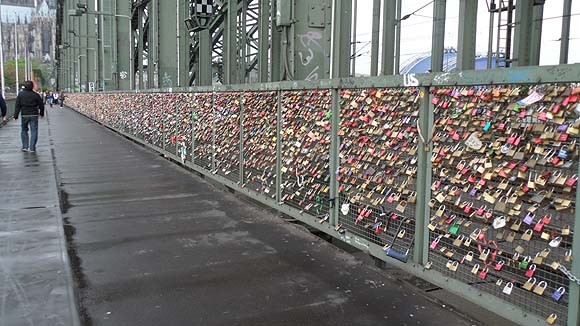The idea behind "love locks" is simple: couples prove their bond is unbreakable by affixing a lock scrawled with their initials on a bridge and then tossing the key into the river below, never to be seen again.
The tradition is said to have originated on the Ponte Milivio, a bridge over the Tiber in Rome. Now, it has become a worldwide phenomenon, with love locks being spotted everywhere from Uruguay to the Ukraine.
Not everyone is in love with the tradition, though. Love locks were just banned on a Kentucky bridge over the Ohio River, and the locks pictured above were once threatened, too. These are from the Hohenzollern Bridge in Cologne, Germany, an overpass that has become so packed with padlocks the bridge's operator has threatened to saw them off. But the people of Cologne, as well as visitors, wouldn't have it. After public outcry over the matter, the operator was forced to have -- you guessed it -- a change of heart.
Today, the love locks add a little glitter to a bridge that is otherwise gritty and dull. But up close things aren't always picture perfect: there were a few spots where fence wires were cut, perhaps in an symbolic effort to release scorned lovers of their shackles.
As I crossed the bridge, two little boys were tugging on the padlocks trying to shake them loose -- I guess the heartbreaking starts early in Germany.
Below the bridge, I was actually a little surprised there weren't vendors peddling padlocks. I imagine they could camp out, armed with engraving tools, hawking love locks to tourists for 20 euros a pop. It looks like there really are some things that are still sacred.






